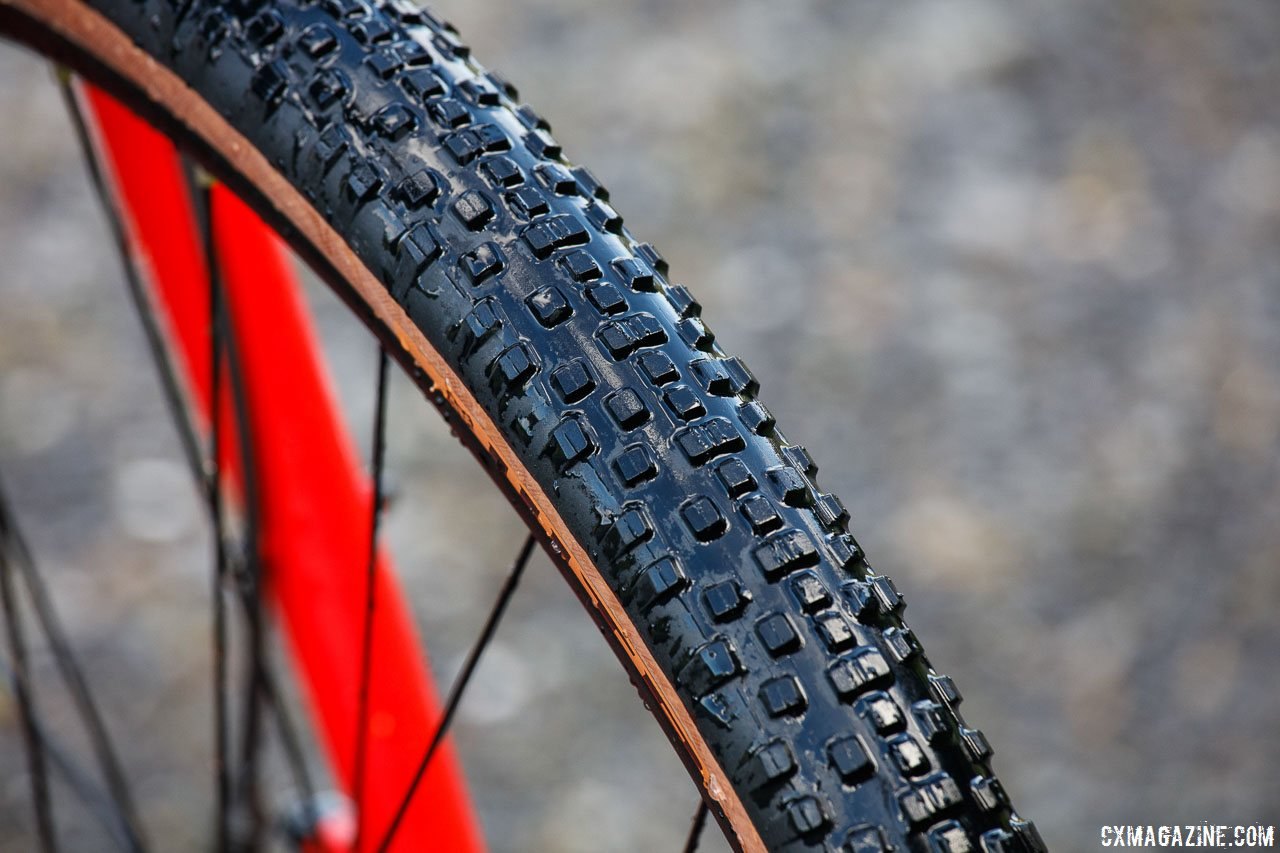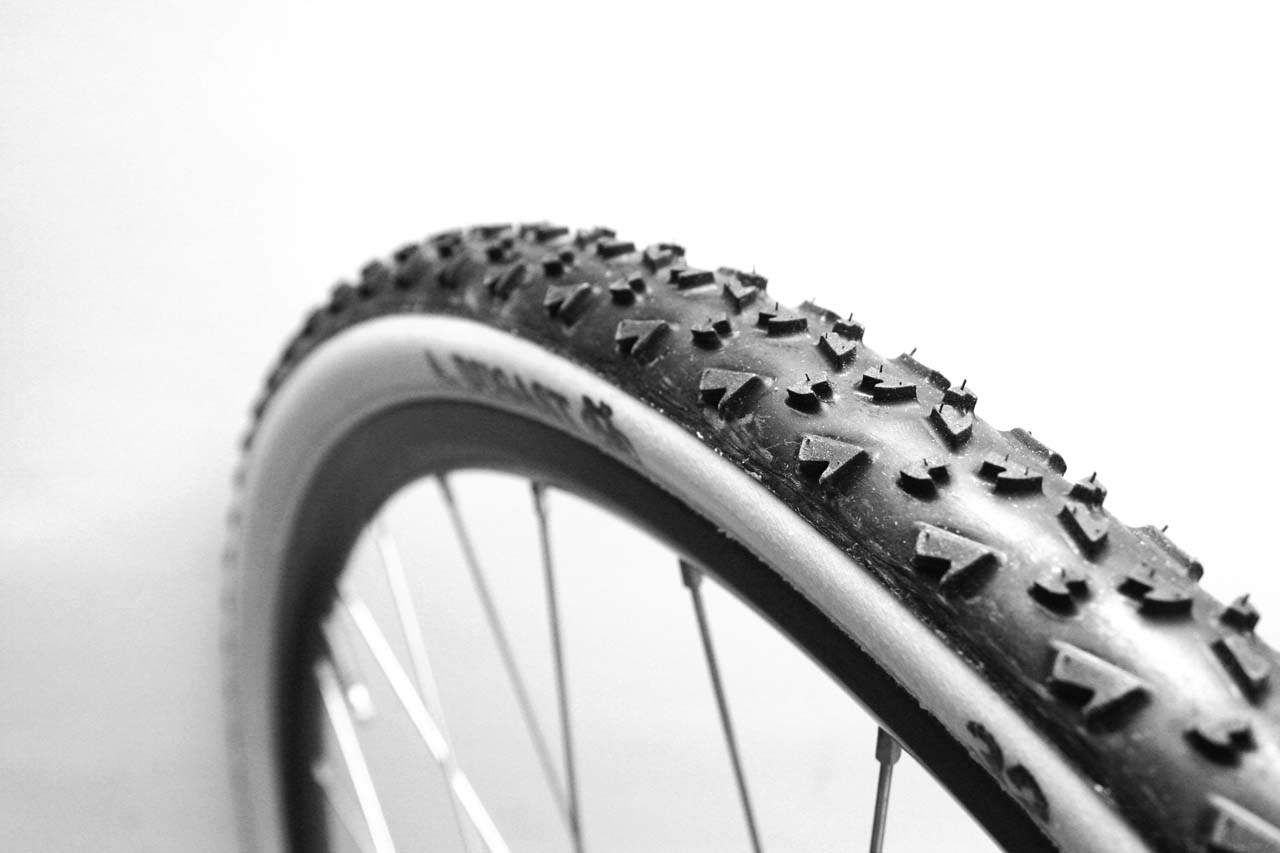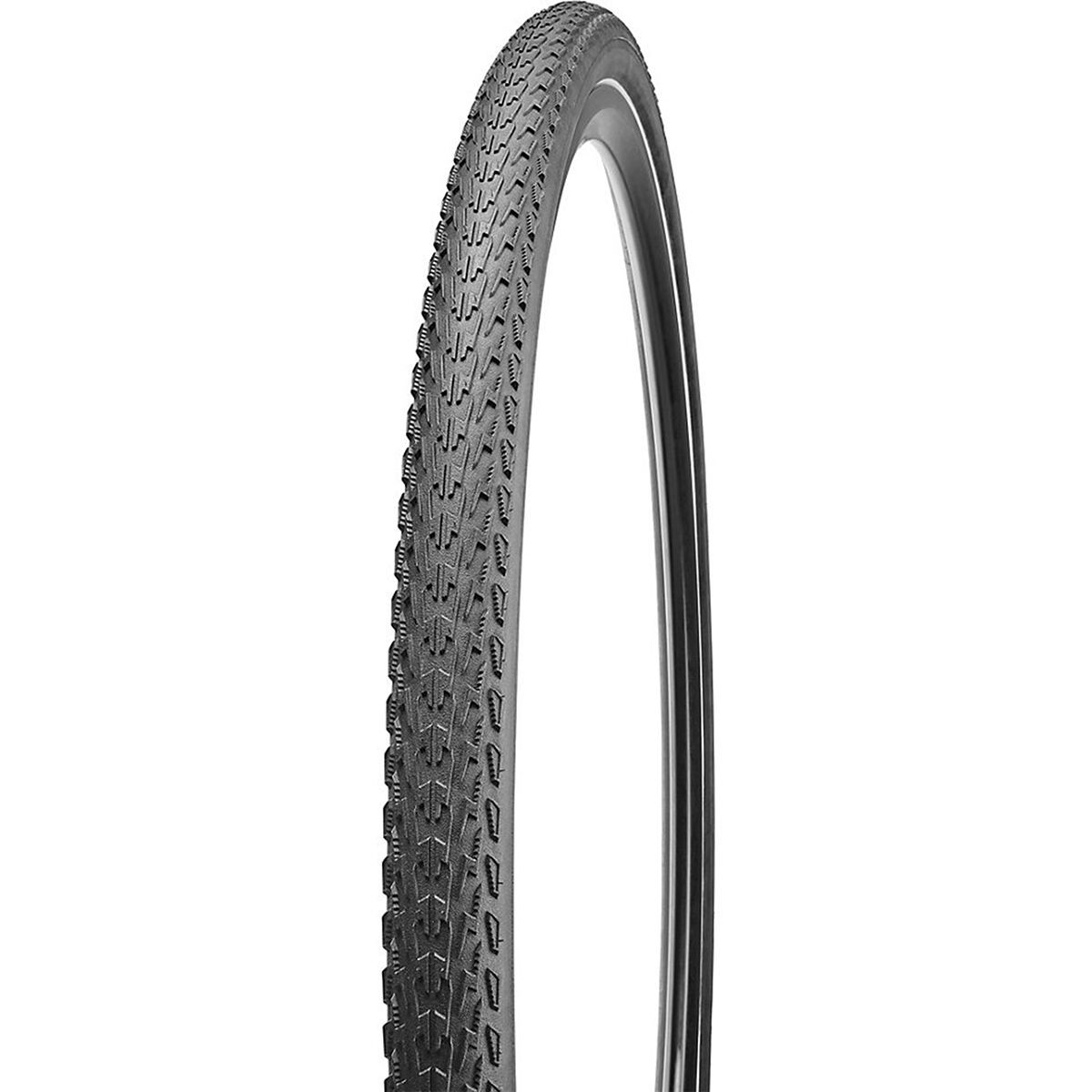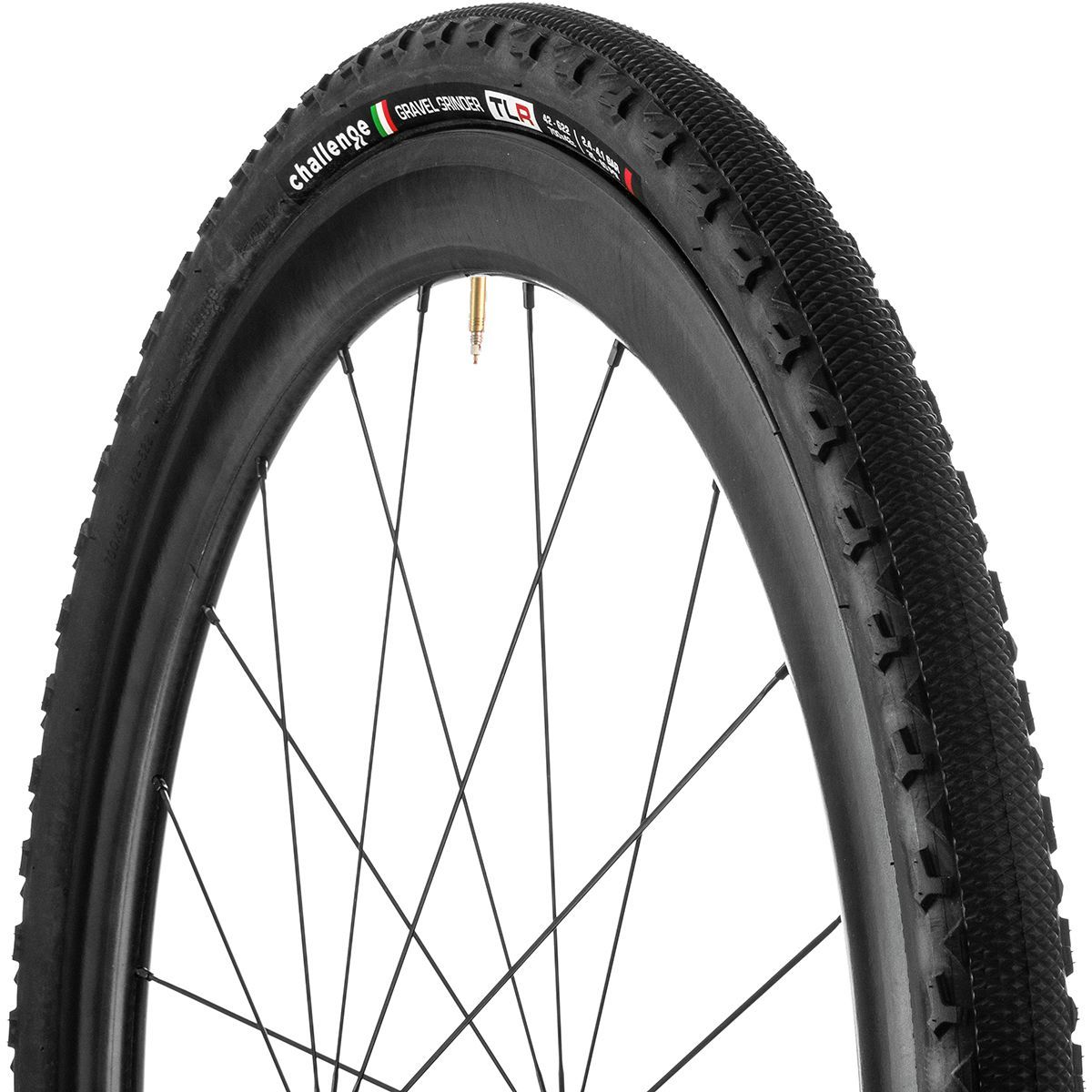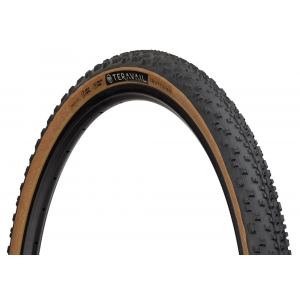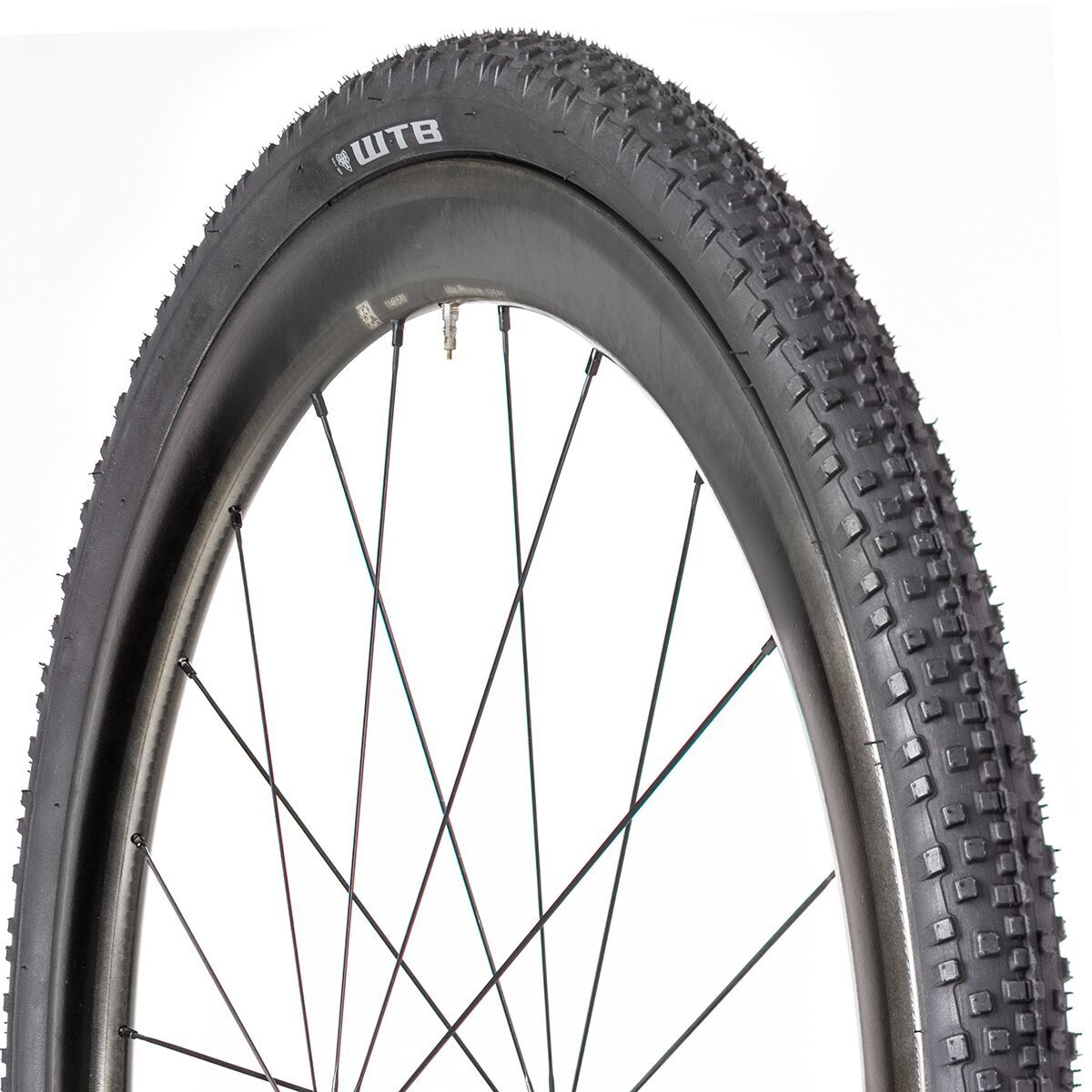It’s finally cyclocross season for most readers, and in many parts of the country, that means early season, dry and dusty conditions. Today, we’re bringing back a popular post from last year that may help non-UCI racers with their tire choice for dry races.
Unless you’ve remained buried under the mud from the cyclocross season of five years ago, you’ve probably seen an explosion of anything gravel-related in bike tech. We’ve seen bikes, wheels, shoes, bibs and of course, tires, all marketed as gravel-specific.
Options for drop bar (and flat bar) riding are good. Sure, we’ve long emphasized that most cyclocross bikes make fine gravel machines, but now we’re blessed to have a new group of cyclists wondering whether their gravel gear is well-suited for cyclocross racing.
In many circumstances, “gravel” gear is great for cyclocross racing! We believe nobody should stand on the sidelines simply because they’re worried they don’t have the perfect bike to try a cyclocross race. Often people become too obsessed with the width of a race track, not the actual riding surface.
In today’s installment, we’ll look specifically at tires.
Here are seven reasons why your gravel tires might be great for racing cyclocross, whether you’re new to the sport or a seasoned ’cross racer.
1. Barriers and Run-Ups Don’t Require Specific Treads
So you’ve heard cyclocross has dismounts and remounts with random bike carries.
Sure, this is quite different from 99 percent of your average gravel grinder, save those creek crossings like the ones found at races such as Dirty Kanza and the Almanzo 100.
But that doesn’t mean you need a different tread pattern. When you’re carrying your bike, it’s your shoe’s traction that matters, not your tire. For those times each lap you are off the bike, your gravel tubeless treads are just as good as the most supple tubular out there.
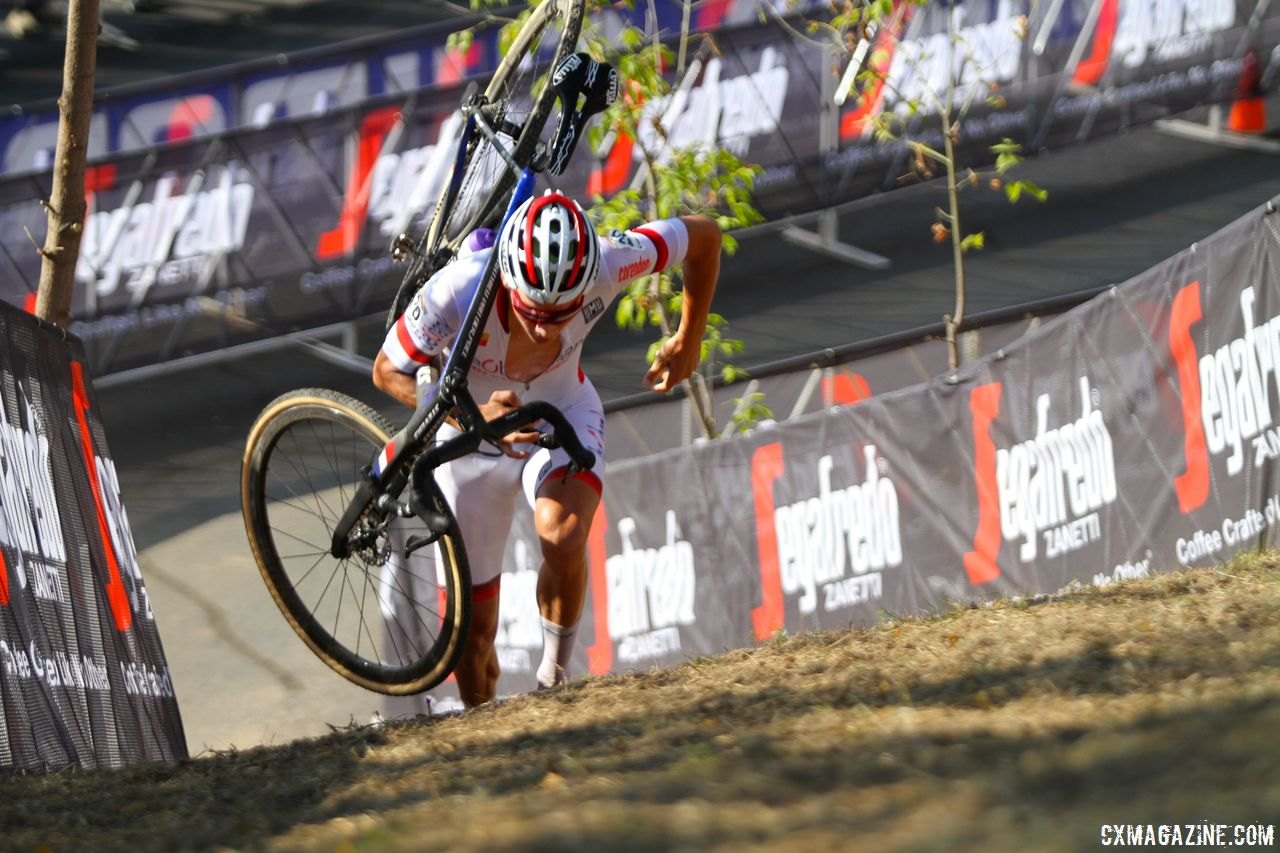
Doesn’t matter what tread you’re running on a run-up. 2017 World Cup Waterloo Men. © D. Mable / Cyclocross Magazine
2. Gravel and Dirt Roads Are Common in Early Season Races
While some parts of the country have already enjoyed early-season mud, much of the country’s early-season races, including Rochester Cyclocross and especially events on the wildfire-damaged West Coast, often feature bone-dry, rock-hard dirt and gravel roads and paths—exactly the type of surface most gravel tires were designed for.
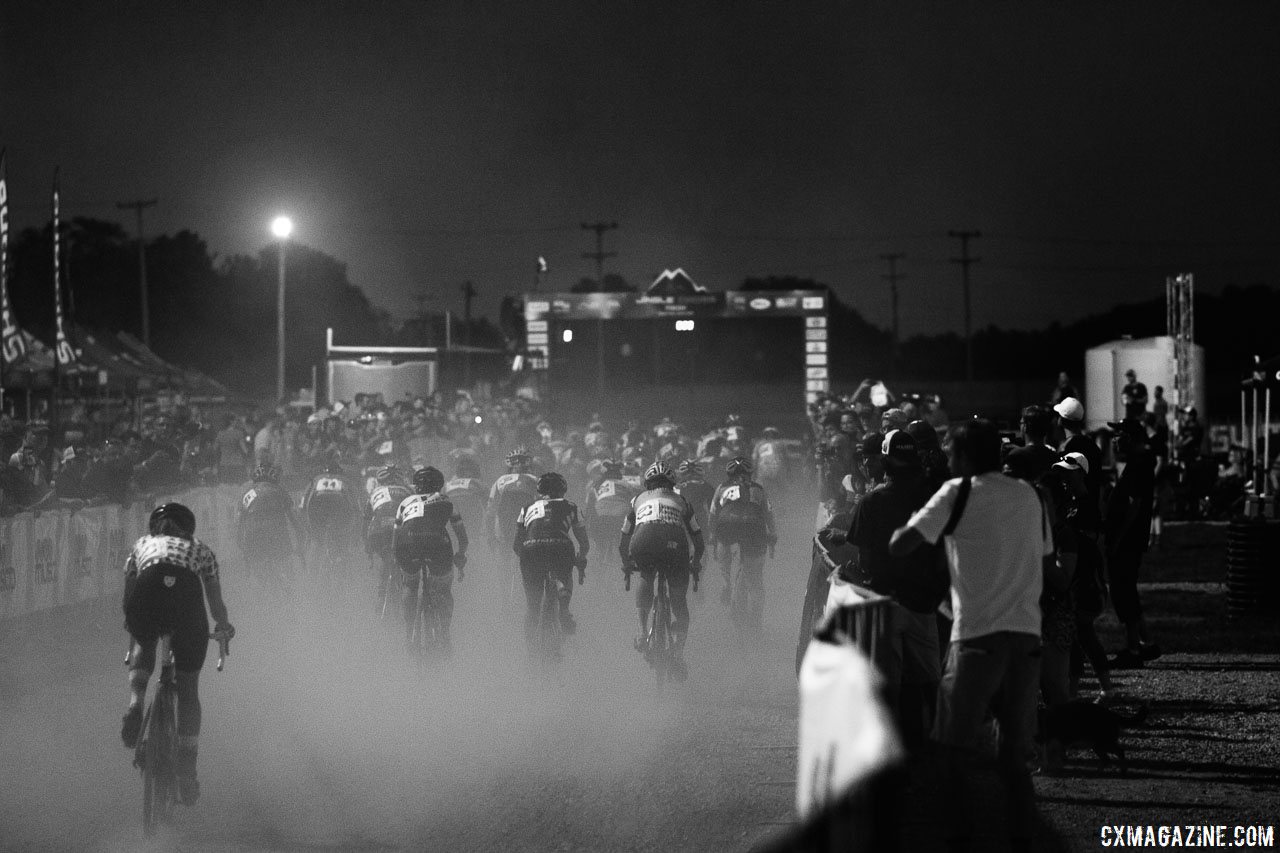
Early season World Cup courses offer up conditions well-suited for gravel tires, like the dry and dusty 2017 Jingle Cross, Day 1. © A. Yee / Cyclocross Magazine
While “gravel” varies in size and consistency, so much so that regulations, facetious or not, have been proposed, look closely and most gravel roads are variations on a dirt road. Even the early-season World Cups in the U.S. feature mostly dirt paths as well with some blades of grass thrown in.
Gravel tires are typically designed to roll fast on hardpacked surfaces and remain durable after miles of use. Sound like your current conditions? Don’t stress about the labeling or marketing and pick a tread appropriate for those conditions.
Yeah, your local race might have a few hairpins that you might not find when slogging through hours of gravel (unless you make a wrong turn or two), and those might have you leaning over a bit more than you’re used to. However, many gravel tires have a sufficient side knob, not unlike a cyclocross tire.
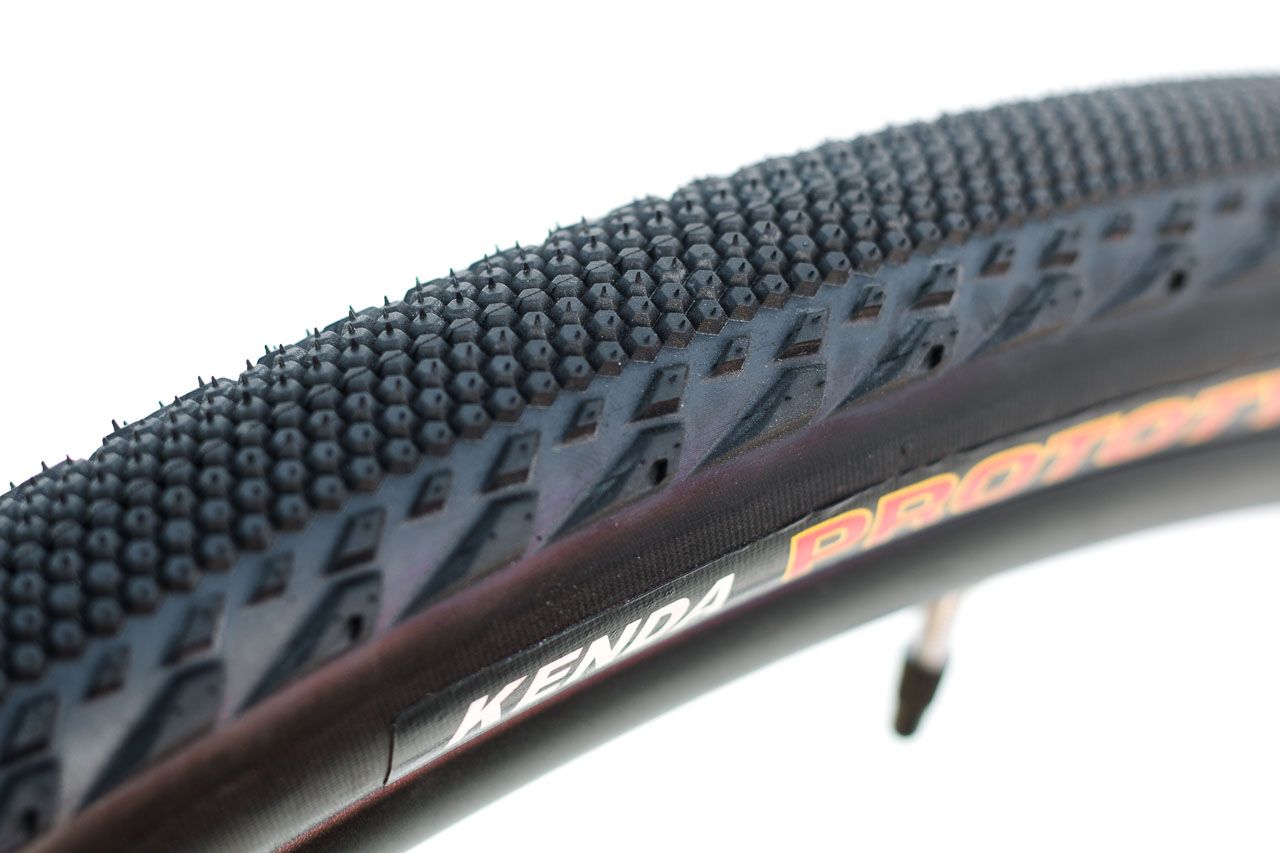
Kenda’s new Alluvium tire has two rows of side knobs along with a smoother-rolling center. Kenda Alluvium Gravel Tire. © Cyclocross Magazine
3. Gravel Tire? You Mean Overgrown File Tread?
Inspect the tires of top cyclocross racers at your local race or even a UCI event this time of year, and there’s a good chance you’ll see a Vittoria Terreno Dry, Challenge Chicane or Specialized Tracer tubular in a 33mm width.
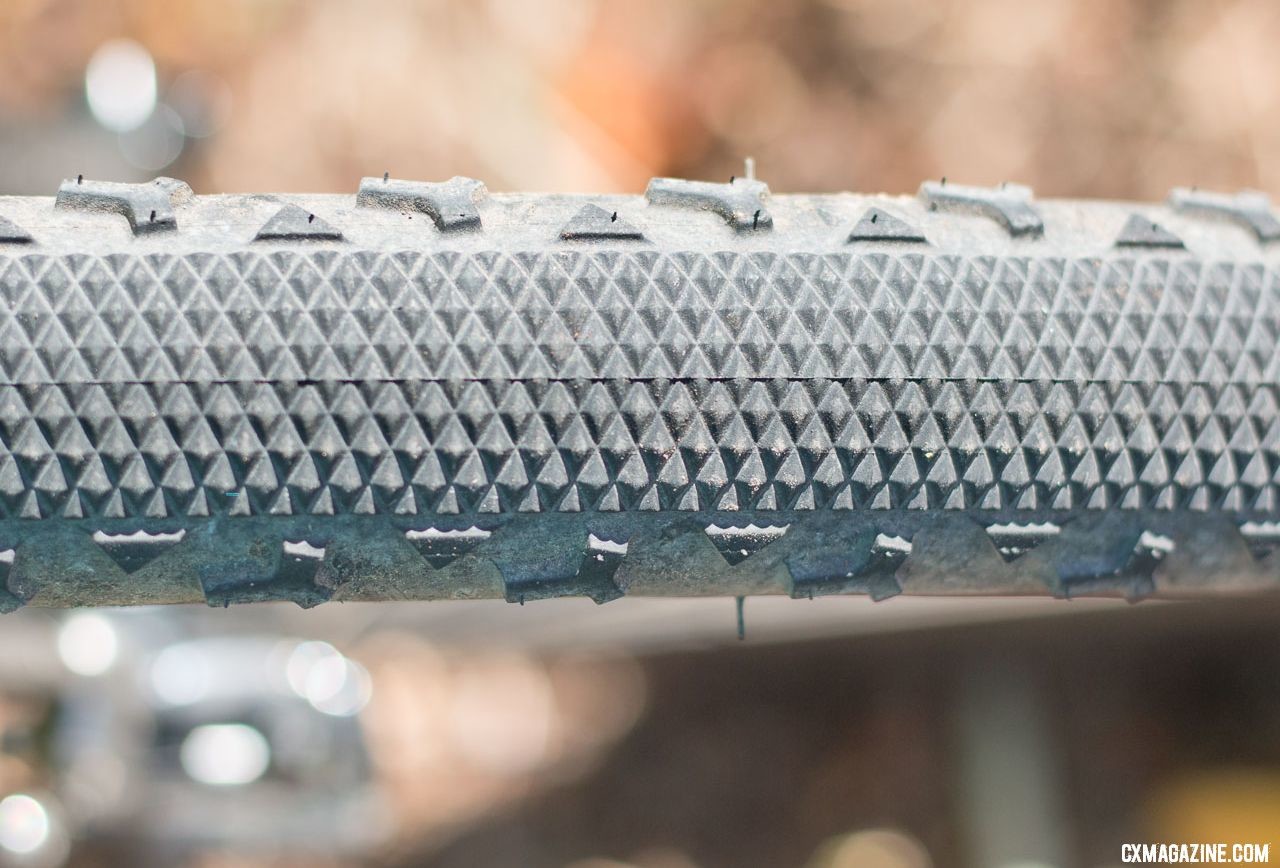
Challenge’s Gravel Grinder TLR Tubeless tire is fast rolling tread with big, grippy side knobs that take quite a bit of lean to engage. © Cyclocross Magazine
These tires in clincher form come in two different widths, with the larger-volume options marketed towards gravel. The Terreno Dry comes in a 40mm option, the Tracer (and older Trigger) in 38mm, while Challenge swaps out the Chicane name for the Gravel Grinder label in 38 and 42mm options.
Adding a few mm in width to a cyclocross tire does not suddenly make a tire gravel-specific. In fact…
4. When It’s Bumpy, Higher Volume Can Be Faster
While tubular fans long lusted after the legendary, once-hard-to-find supple cotton casings of Dugast tubulars, there are other ways for non-tubular racers to increase rolling speed that don’t involve glue or dual-sided tape.
Higher volume tires allow for lower pressures and more travel (bump absorption) than the equivalent narrower tires. This is perhaps the biggest reason to reach for gravel tires on race day.
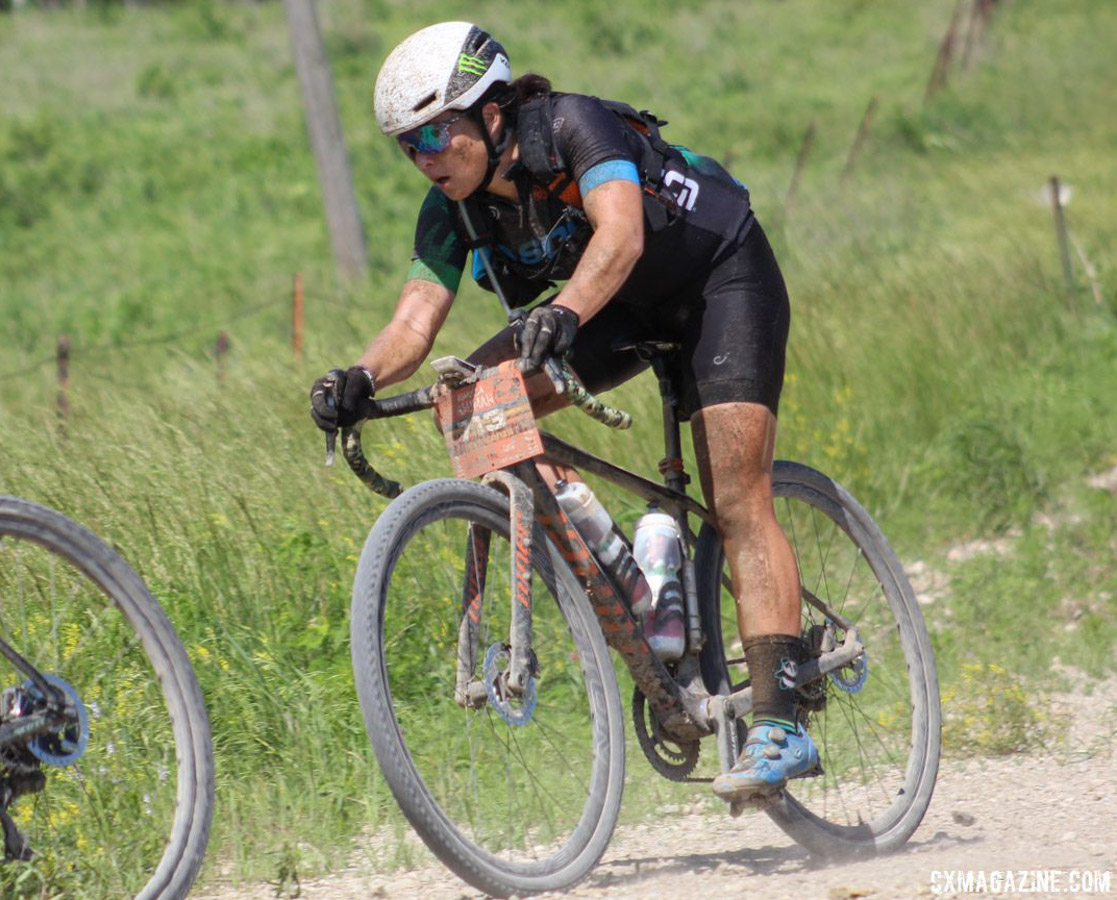
High-volume tires help soak up the hits on the gravel roads of Kansas, so why not use them for bumpy cyclocross? 2018 Women’s Dirty Kanza 200. © Z. Schuster / Cyclocross Magazine
Find yourself dreading the bumps of rock-hard early season races? A 40mm tubeless tire at low pressures can offer you lower rolling resistance as well as better burp and flat resistance than 33mm options (and certainly more speed than hitting your rim).
Tire suppleness is impacted by several factors, mainly the materials used and air pressure. While most gravel clinchers’ vulcanized construction equates to a nylon casing that isn’t as supple as the highest-end tubular, you can ride a larger tire at a lower pressure than a narrow one that will more likely bottom out, and enjoy better flotation when conditions are loose or sandy.
5. Show Up With the Right Tread
Because many amateur cyclocross racers struggle to have more than one tubular wheelset for race day, they’re forced to pick a do-it-all tread or a mud tread to be ready for all conditions. But with tubeless tires (and also inner tube setups), you can reliably swap tires close to race day and have the most appropriate tread.
A fast-rolling tread for dry conditions might offer more of an advantage than a narrower, handmade, bigger knob offering, high-volume or not.
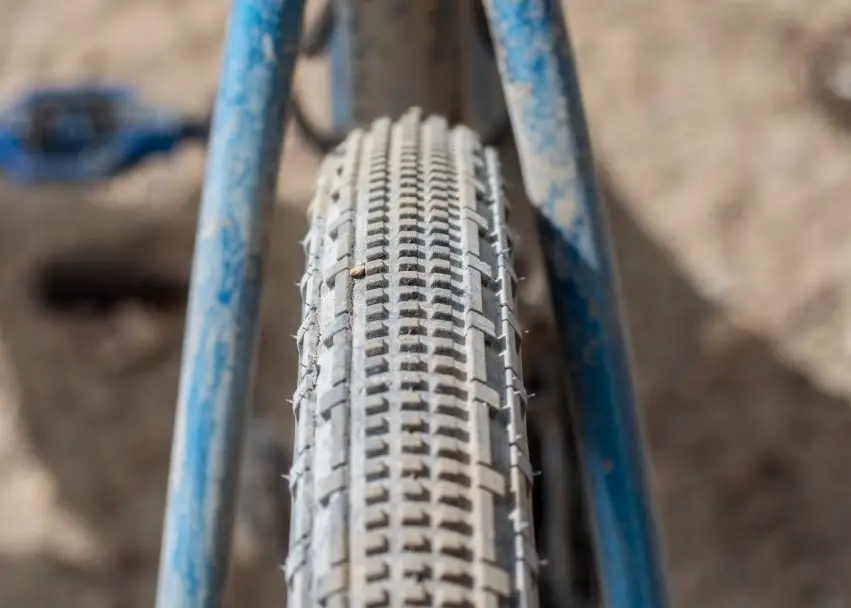
Panaracer’s Gravel King SK tread is designed to roll fast and be durable in dry, hard conditions. Sound like your local cyclocross conditions? Panaracer has five different widths to accommodate any rider or bike’s needs, even the tire clearance constrained. photo: Robin Farina’s winning bike. 2016 Lost & Found. ©️ Clifford Lee / Cyclocross Magazine
And should you become addicted to the high-volume, cushy ride? There are plenty of higher-volume tires with more knobs than a semi-slick. Think WTB Resolute, Kenda Small Block Eight, Soma Fabrications Cazadero, Donnelly X’Plor MSO and Teravail Rutland.
And when conditions get sloppier, there are several narrower 29er tires with full knobs that work well with high tire clearance bikes.
6. Make it to the Finish
Since some gravel tires are built to withstand the rigors and hazards of events like the Dirty Kanza 200 and Lost and Found, they often feature puncture protection belts and casing liners. While these layers compromise a tire’s suppleness, on rocky courses, that puncture protection might keep you rolling to the finish instead of looking for the pits or your car.
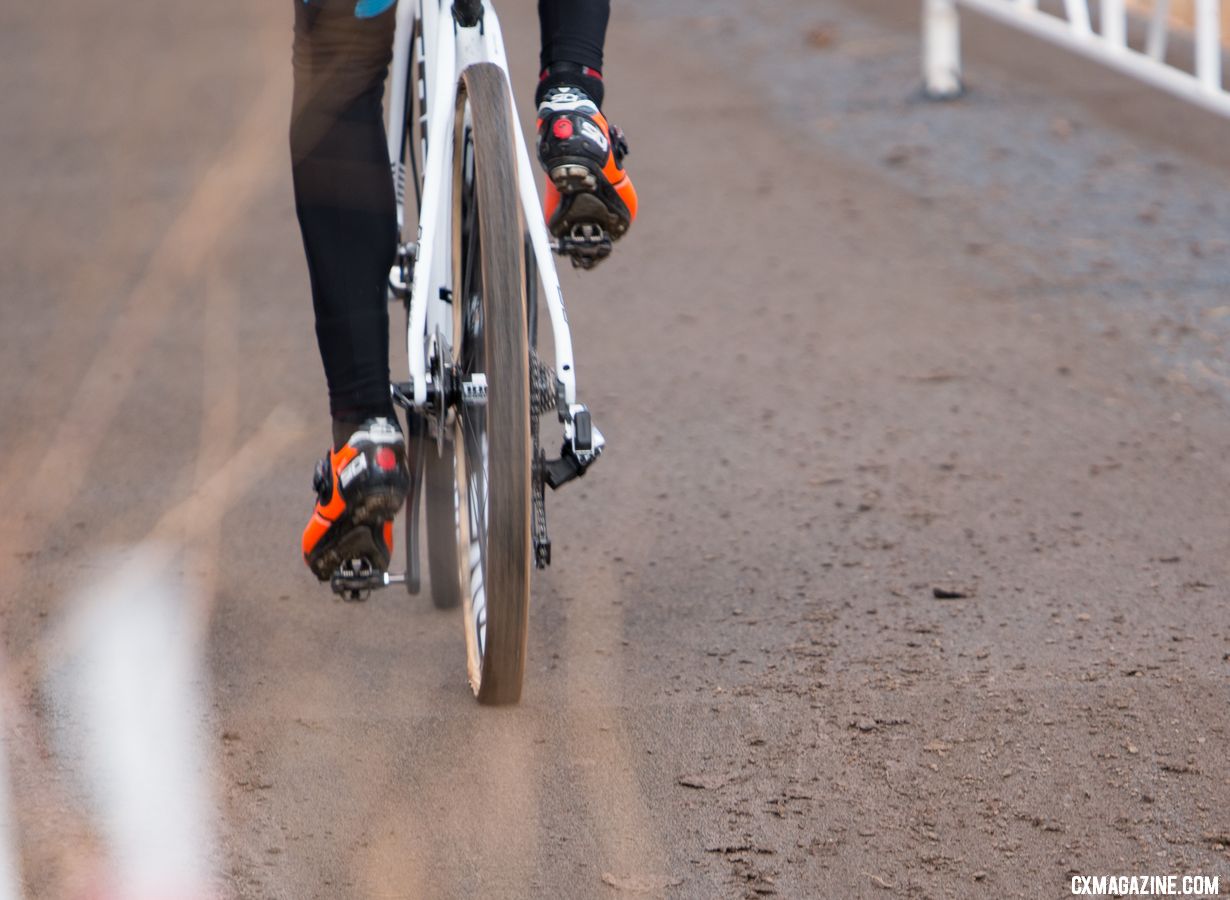
Reinforced tubeless casings might help you avoid a deflating flat that can end a tubular racer’s day. Masters 60-64. 2018 Cyclocross National Championships. © A. Yee / Cyclocross Magazine
7. It’s the Trend
No, we’re not advising you to ride a gravel tire in a cyclocross race because gravel is trendy.
But perhaps you may have noticed the wider-is-better trend with tires in both the road and mountain bike scenes. Over the years, the common size for road tires has grown from 20mm to 23mm, and then more recently ballooned out to 25mm and now 28mm. If our math is right, that’s a 40% increase in tire width with an even bigger increase in tire volume.
On the mountain side, we’ve grown from 1.9″ tires to 2.4″ (25 percent increase in width) and beyond.
Yet cyclocross tires have mainly hovered between 30-33mm for quite a while. Sure, 28mm tubulars were popular back in the day, but before the UCI reduced tire maximum widths, so were 35mm tires. If anything, bigger racers have been unfairly penalized by the UCI’s reduction in maximum tire width.
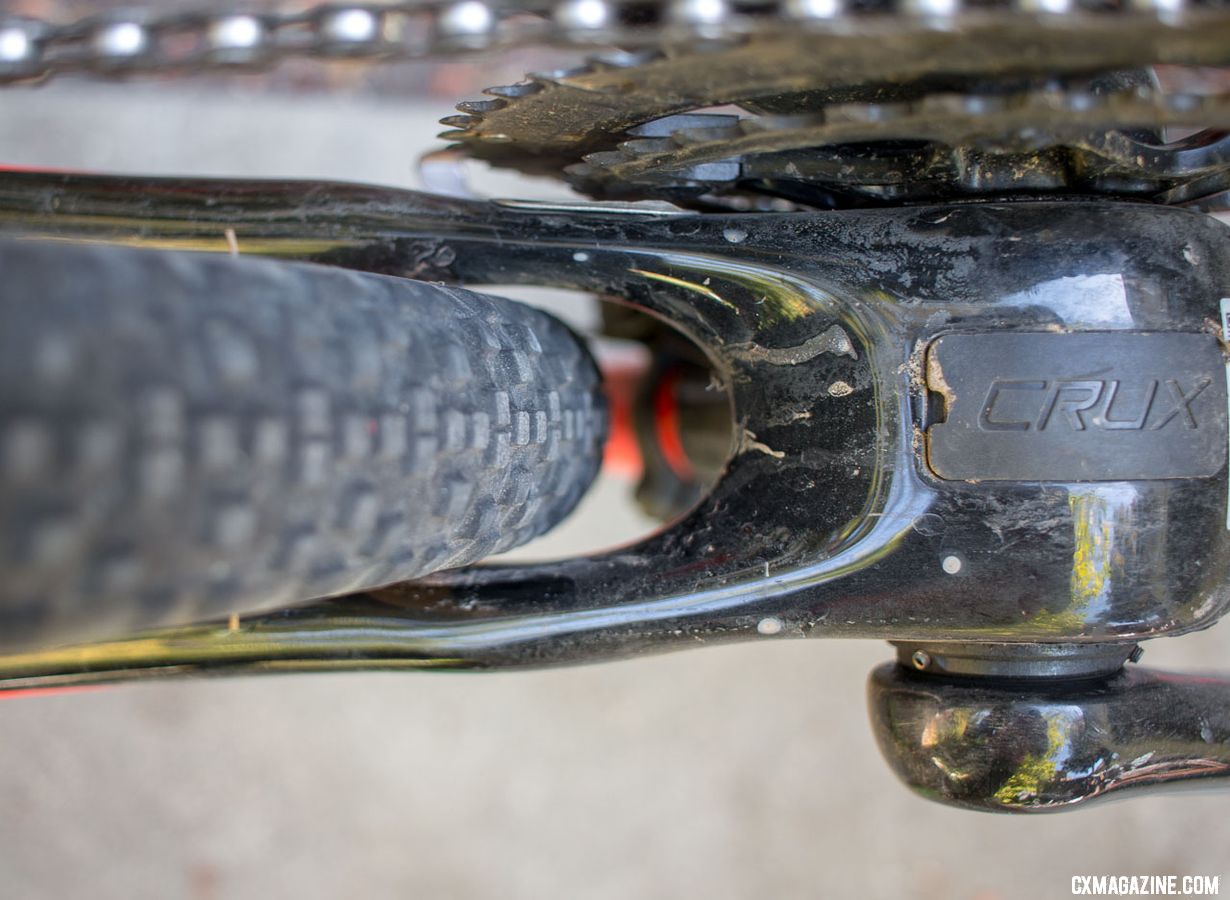
The 2018/2019 Specialized Crux may not market itself as a gravel bike, but there’s clearance for bigger tires. 44mm wide tires barely fit, and 40mm tires fit with more room for an out-of-true wheel. © Cyclocross Magazine
There are many good reasons both road tires and mountain bike tires have grown 25-40 percent in width while nearly doubling in air volume, but most of them relate to rolling speed and comfort. Think those traits are equally important in cyclocross? We do too.
Thankfully, most of us, at least in the U.S., don’t have to worry about UCI tire width restrictions (or even a sudden enforcement of rules at Nationals). So if we take the leap and apply the similar width increase in road and mountain bike tires to a 33mm cyclocross tire? You end up with a 40-46mm tire, right in the wheelhouse of gravel tires. Hopefully, your bike has sufficient clearance.
Don’t Throw Out the ’Cross Tires Yet
Of course, gravel tires aren’t perfect for every cyclocross race, or every region. There are always downsides, and larger, fast-rolling gravel tires have theirs as well.
Mother Nature bless your weekend with some good mud? Narrower, big knobbed tires are grippier in mud and can dig in deeper to offer grip on harder surfaces.
High volume tires also don’t help even on a bumpy course if your bike is clogged due to limited tire and mud clearance at the frame, fork or rim brakes.
Got thin skin? Maybe thick tires aren’t for you. Choosing equipment because of what others might think is never a good idea, but be warned that there are a few cyclocross traditionalists who might try to deflate your oversized pneumatic endeavors with pointed equipment heckles. Keep rolling past them with a smile, thanks to your cushy ride.
There’s also the weight issue. Spending $1k or more on carbon hoops only to add back another 50 or 100g per wheel due to bigger tires can hurt the shoulder on run-ups, and acceleration out of hairpins. Yeah, that’s a bummer, but you’re likely to gain that time back on the bumps. You just might not notice those gains as much as you notice a heavier bike at the barriers.
The Perfect ’Cross Tire?
In the end, tire selection is a very personal issue for most cyclocrossers, but whether you’ve got a gravel bike and are curious about trying cyclocross or haven’t yet swapped out the gravel tires on your bike in time for cyclocross season, you might already have the perfect tires for a dry race.
Assuming the UCI’s 33mm width limit doesn’t apply to you, forget the labels and marketing and rely on your results and enjoyment as indicators of whether these bigger, fast-rolling tires are working for you.
This article was originally published on September 12, 2018. Know someone still stuck on narrow-and-high-pressure-is-faster mindset? Share this article and help them get faster.













